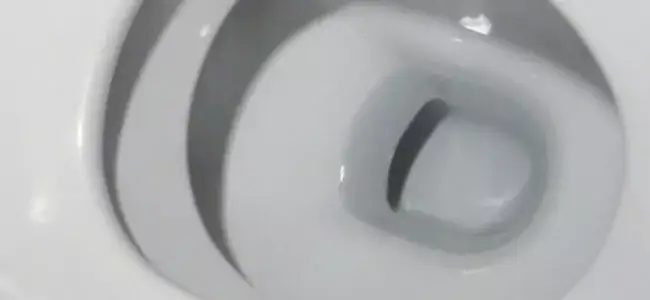History of septic systems (the evolution in time)

TABLE OF CONTENTS
In 1892, Victor Hugo famously wrote, “the history of men is reflected in the history of sewers.” He was somewhat right. Granted, what flows in today’s sewer systems is quite different from what flowed in sewers in Victor Hugo’s time. But understanding the history of septic systems will help us appreciate the steps that we have taken over the years to improve wastewater management.
The history of septic systems can be broken down into the following noteworthy timelines:
- Early history
- Greek civilization
- Sanitary dark age
- The industrial age (a time of sanitary enlightenment)
- Age of meticulous environmental standards
Early History
The first modern humans (Homo Sapiens) were scattered over large areas and their waste was returned directly to the land where it decomposed through natural cycles. Because these early humans were largely nomadic and few in number, this form of waste disposal was never an issue. The challenge, however, was when mankind started adapting to changing needs and established permanent settlements some 10,000 years ago during the agrarian revolution. With this new way of life, disposing of raw waste in nature came with notable ecological impacts. The lack of records makes it hard to assess sanitation conditions of the early ages. The earliest documented evidence is found in the Mosaic law which described the disposal of human waste by burying it in the ground (Deuteronomy 23).
The Mesopotamia empire (3,500 – 2,500 BC) was the first to solve the sanitation problem. Archeologists found ruins of homes from Ur and Babylonian that had drainage systems connected to them. some of these drainage systems carried waste into pit latrines while some carried the waste into cesspits. The earliest sophisticated waste management system was in the Indus valley (26-1700 BC). The community here had impressive urban planning with efficient municipal governance that took sanitation pretty seriously. Houses were connected to a drainage system and wastewater was treated before being released into the street sewers. The wastewater was channeled through tapered terra-cotta pipes into small sumps. Here, the solids would settle and the liquids would overflow into the drainage channels that led to the street sewers. The drainage channels were covered by cut stones and brick which were most likely removed when cleaning. This is the first-ever documented attempt of treating wastewater.
Greek civilization – the forerunners of modern sanitation
We have the Greeks to thank for the invention of modern sanitation and septic systems. Most if not all of the modern wastewater management systems can be traced back to ancient Greece. Granted, the Greeks didn’t really invent the sewer and sanitation systems but there is no doubt that they perfected them. The Greeks built intricate sewer systems that still exist and work just fine albeit 4,000 years old! The Greeks connected their houses to latrines which drained into pipes that eventually conveyed the wastewater into a collection basin outside the city. From here, brick-lined conduits conveyed the water into fields where it was used for irrigation. These channels were built with slabs of stone on the bottom and topped with two orthostats placed at 1 ft apart. These were then covered with stone slabs to form a box culvert.
The sanitary dark age
The collapse of the Roman Empire coincided with what historians have referred to as the sanitary dark age. It was a period when septic systems were no longer held in high regard. This period lasted for 1,000 years. During this time, the notion of water as the primary source of wellness was abandoned. The breathtaking facilities that had been built by the Romans to convey water were neglected in one of the most remarkable historical retrogressions. Man went back to drawing water from the rivers and discharging waste without treating it first and this resulted in an increase of communicable diseases. Considering that the Romans had intricate channels for removing wastewater, it is mindboggling that by the end of the 19th century, less than 50% of Italians had piped drinking water and more than 77% had no sewers. Throughout the middle ages, there was a notion that water wasn’t healthy. Dirt was covered by glitter and wigs and hygiene was thought of as a guilty pleasure. It was widely believed that taking a bath opened the pores of the skin and exposed the body to all manner of illnesses.
During the sanitary dark age, households seldom had sanitary facilities. It was common practice to empty chamber pots right on the street. This is captured in a 1985 Italian film “Non ci resta che piangere” which shows the protagonist walking in a medieval town and experiencing the waste disposal system. But even in these times, there were still some notable exceptions. For instance, some cities in central and northern Italy had established municipality guidelines for control of environmental conditions. The municipality came up with statutes against the emptying of cesspits or transporting their contents in summer. In Milan, cesspits were emptied by a navazzari (cisternari) which is a term that described a person who operated a “navazze” or a cart. Waste would be collected on these carts and then transported out of the city. The city regulations also prohibited the emptying of waste on roads or into rivers and encouraged the use of wastewater as fertilizer. But notably, some rivers were not protected. The Nirone River which loosely translates to “black river” was so-called because of the amount of wastewater that was discharged into it.
In the 1530s, Europe was hit had by plagues and this was the tipping point. King Francois 1 ordered every homeowner in Paris to build septic systems (cesspools) for their properties. These cesspools were used until the 1700s. The building of cesspools on each property helped to reduce the cases of contamination of drinking water. The building of cesspools in London can be traced back to 1189. Wastewater was collected in cesspits where it was treated with bacteria and then conveyed to the countryside for farming. “Rakers” or “gongfermors” would remove the sewage from the cesspools and sale it to the farmers outside the city walls as fertilizers. The cesspits continued to be used for domestic waste disposal until 1880.
The age of sanitary enlightenment
The industrial revolution paved the way for urbanization which also led to more emphasis on wastewater management and septic systems. Britain was one of the first countries to start experimenting with an organized action for the improvement of sanitation conditions in the city. The first sewer system in London was contrasted between 1858-1856. Wastewater was conveyed from the houses into the channels in the streets and then discharged into the Thames. At the time, there was no understanding of the need to remove pollutants from the wastewater before discharging the waste into the water.
In France, collection points were installed in the 1850s and landlords were compelled to modify their usage in order to reduce the amount of discharge that was sent downstream. This was in response to the wanton pollution of rivers that was increasingly becoming noticeable. Meanwhile, the Italians gave more priority to the development of infrastructure for drinking water and didn’t pay much attention to wastewater disposal. However, in 1870, the Neapolitan sewer project commenced following the input of doctors, architects, and engineers. The result was an astonishingly modern concept that took them years to design and build and was launched in 1889. Research shows that every major city in Italy had a working sewer system by this time.
In the 1800s, community sewers were introduced in the USA primarily to take care of stormwater. However, cesspools were used in homes for human waste disposal. This notwithstanding, lots of homes still used the sewer systems although they were not really designed for wastewater. Large cities like Boston installed sewers as early as the 1700s and they used hollowed-out logs for pipes. It was not uncommon for waste to be washed into the streets by storms. The first-ever wastewater management initiative was started in 1647 by the British colony of Massachusetts.
The 20th century came with a revolution in septic systems. In the year 1912, the Royal Commission of Sewage Disposal came up with the idea of biochemical oxygen demand (BOD) and put in place protocols for sewage management. Before their disruption by the first world war, all major cities in Europe had put in place wastewater management systems. By the year 1950, the debate around pollution centered on water quality and there was a general consensus of the relationship between chemical pollution and water toxicity.
Evolution of wastewater treatment and septic systems
Primary treatment
This is the removal of heavier solids through a process of gravity sedimentation. Trenches and pits were the earliest forms of primary treatment and they were primarily used to remove heavier solids in order to prevent clogging in the soil. In the year 1860, a new kind of cesspit was designed which had an inlet and outlet pipe that dipped below the surface of the water thereby forming a water seal. Septic tanks improved on this idea even further and were widely used by the year 1895. In the USA, primary treatment was the defacto method of wastewater treatment up until 1972 when the clean water act made secondary water treatment mandatory.
Secondary treatment
This is a process by which bacteria and enzymes are used to convert organic waste into carbon dioxide, water, and energy. Secondary treatment solutions were either attached growth (biofilms) or suspended growth (activated sludge). The attached growth systems had a fixed substrate on which micro-organisms would grow. Wastewater flowed over this aerated biofilm and this helped in the reduction of BOD. For the suspended growth systems, the biomass was mixed with the wastewater thereby resulting in BOD reduction. The solids would then be removed through a sedimentation process.
Conclusion
Today, almost every city in the world has functioning sewage and wastewater management system. Wastewater from homes is sent through the primary and secondary treatment systems via different processes before the water is released. However, it is still not practical to connect every household to city-wide sewage systems. Septic tanks are used as an alternative in cases where it might not be feasible to connect to the city sewage system. The introduction of bacterial additives has made septic tanks very efficient in the treatment of wastewater and this is now the defacto wastewater treatment alternative to the municipal sewer systems. Even though septic systems are more or less primary treatment solutions, the addition of leach fields, additives, and advanced septic systems makes it possible to achieve high-quality treatment of wastewater.
OUR LATEST BLOG POSTS

Strange facts about septic systems
If you are a septic system owner, you might have heard all manner of myths. For instance, there is a common myth that throwing a dead cat in the septic tank can help rejuvenate bacteria and thereby make the septic tank more effective. But is this even true? In this article, we will not only answer that […]

Soils types and their impact on septic systems
SOILS TYPES AND THEIR IMPACT ON SEPTIC SYSTEMS However good your septic system is, it depends on the right soil type to complete the process of purifying the wastewater from your home. The soil type in the drainfield area will determine how well the effluent is filtered and if the water that is sent back to the […]

Avoid flushing these if you have a septic tank
Most homeowners wrongfully assume that their toilet can serve as some sort of garbage disposal. As a result, they end up flushing all manner of things in the toilets. Some of the things that are flushed down the toilet are actually innocent mistakes because homeowners think that is the right way to dispose of the products while in other cases, it is just a don’t care attitude. Whichever the case may be, flushing some of these things can result in septic system failure and it could cost you a fortune. We have rounded up some of the commonly-flushed products that you should never flush if you have a septic system.
PERFECT! I WOULD NEED...
Discover which products are the best for your needs!You can contact us at 1-800-378-6132 (toll free) or click on the following button to access our free online evaluation.
GET A QUOTE ONLINELog in to your account
Whoops! It happens sometimes...
CREATE A NEW ACCOUNT
CONGRATS!
You are now registered and ready to go. You can add and change any of your information on your client profile.
Unfortunately, we do not ship our products to the USA at the moment.
But, if you live in the United States and would like to order them, please fill in the form below. You will then be notified as soon as they are available in your country.
Thank you for your understanding!
Malheureusement, nous n’expédions pas nos produits en France pour le moment.
Mais, si vous êtes résident français et aimeriez les commander, remplissez s’il vous plaît le formulaire ci-dessous. Nous pourrons ainsi vous aviser aussitôt qu’ils seront disponibles dans votre pays.
Merci de votre compréhension!

-
30 products to avoid
-
What to replace them with
-
And everything you should know about your septic system
DOWNLOAD THIS FREE EBOOK!
Which email address should we send it to?


